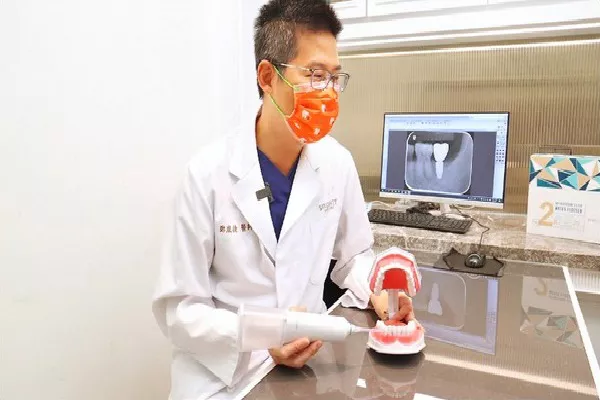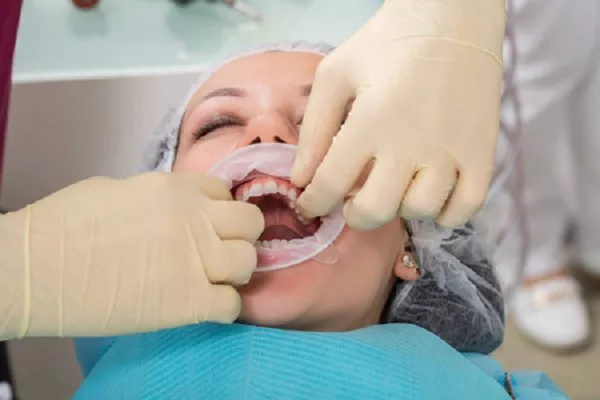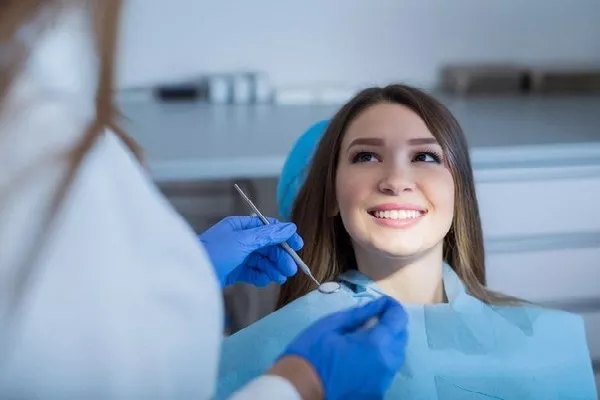Dental cleanings are a fundamental aspect of maintaining good oral health. However, concerns about infections can arise, leading patients to question, “Can I get an infection from a dental cleaning?” While dental cleanings are generally safe and beneficial, it’s important to understand the potential risks, the measures taken to prevent infections, and how you can contribute to a positive outcome. In this article, we will explore the possibilities of infection from a dental cleaning, discuss the steps taken to ensure patient safety, and provide insights into maintaining optimal oral health.
The Dental Cleaning Process
A dental cleaning, also known as prophylaxis, is a routine procedure performed by dental professionals to remove plaque, tartar, and stains from teeth and gums. The cleaning process involves specialized tools and techniques that help prevent gum disease, cavities, and other oral health issues.
Infection Risk Factors
While dental cleanings are generally considered safe, there are certain factors that could potentially contribute to infection risk:
1. Pre-existing Infections: If a patient already has an existing infection in the mouth, the cleaning process could potentially spread the bacteria responsible for the infection.
2. Immune System Compromises: Individuals with compromised immune systems are generally more susceptible to infections. Dental cleanings might pose a slightly higher risk to such individuals.
3. Open Sores or Wounds: Patients with open sores, wounds, or cuts in the mouth might be at a slightly elevated risk of infection due to the potential entry point for bacteria.
4. Rare Complications: While rare, complications such as a damaged gum tissue or a dislodged piece of calculus during the cleaning might lead to a localized infection if not addressed promptly.
Preventive Measures
Dental professionals take several preventive measures to minimize the risk of infection during and after a dental cleaning:
1. Sterilized Instruments: All instruments used during a dental cleaning are properly sterilized to eliminate any potential bacteria or pathogens.
2. Disposable Items: Disposable items, such as gloves, masks, and bibs, are used to prevent cross-contamination between patients.
3. Hand Hygiene: Dental professionals rigorously practice hand hygiene, including washing hands and using hand sanitizers before and after patient interactions.
4. Patient History Review: Dental professionals review the patient’s medical history to identify any pre-existing conditions that might increase the risk of infection.
5. Post-Cleaning Instructions: After the cleaning, patients are often provided with post-cleaning instructions, including guidelines for proper oral hygiene and care.
6. Antibacterial Rinse: In some cases, dental professionals might use an antibacterial rinse during the cleaning to help reduce the bacterial load in the mouth.
7. Avoid Aggressive Cleaning: Dental professionals are trained to perform cleanings without causing damage to the gums or surrounding tissues, reducing the risk of infection.
8. Timely Intervention: If any complications arise during the cleaning, dental professionals promptly address them to prevent potential infections.
Patient Responsibilities
Patients also play a role in preventing infections after a dental cleaning:
1. Open Communication: Inform your dentist about any existing infections, compromised immune systems, or oral health concerns before the cleaning.
2. Oral Hygiene: Follow your dentist’s recommendations for proper oral hygiene, including brushing, flossing, and using mouthwash regularly.
3. Monitor Changes: Keep an eye on any changes in your mouth after the cleaning, and promptly report any unusual symptoms to your dentist.
4. Follow Instructions: Adhere to any post-cleaning instructions provided by your dentist, which might include avoiding certain foods or activities.
5. Stay Hydrated: Drinking water can help flush away bacteria and debris from the mouth.
Conclusion
While the risk of infection from a dental cleaning is generally low, it’s important to be aware of potential risk factors and the preventive measures taken by dental professionals. Dental cleanings are essential for maintaining optimal oral health and preventing oral health issues, so the benefits far outweigh the minimal risks. By maintaining good oral hygiene, communicating openly with your dentist, and following their recommendations, you can contribute to a successful and infection-free dental cleaning experience. Regular dental cleanings, combined with proper oral care, are integral to achieving and maintaining a healthy and vibrant smile that lasts a lifetime.
Related Topics:





























